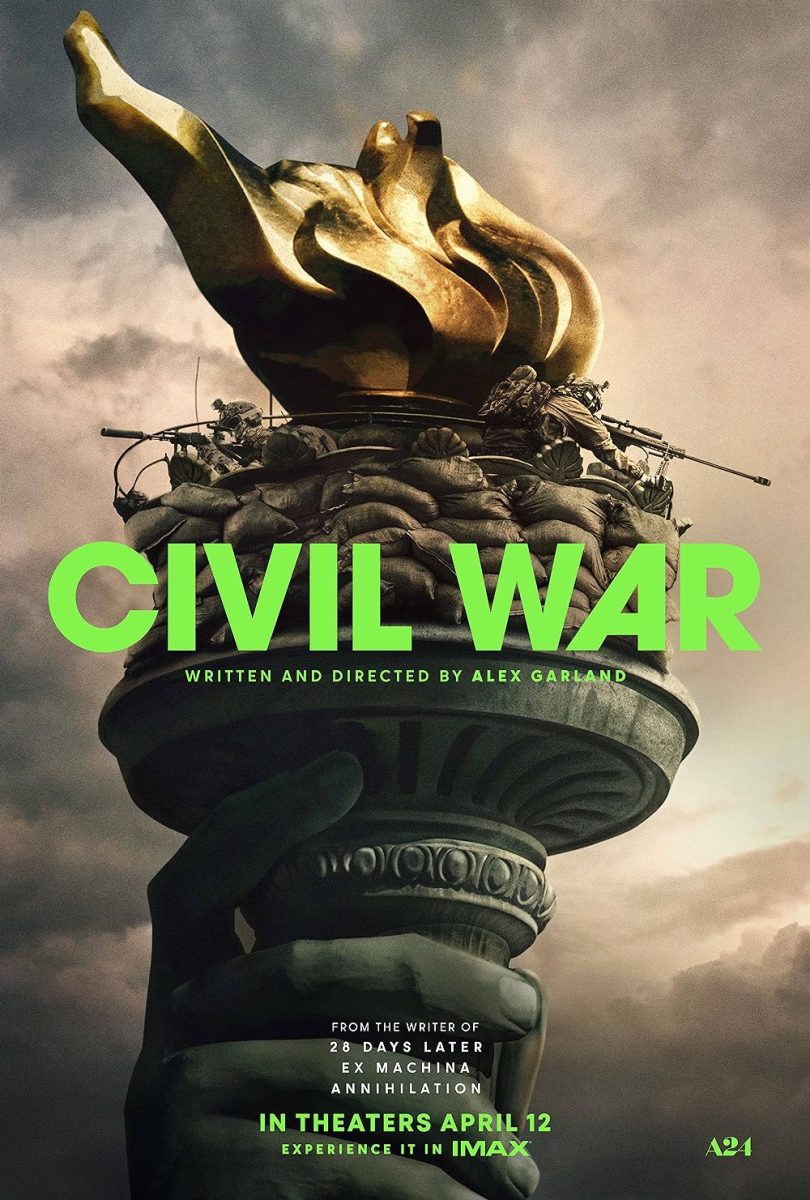Rating: 6.5/10
Released on April 12, the new “Civil War” movie explores various themes through the perspectives of journalists during a mass civil war in the United States.
Starring Kirsten Dunst and Wagner Moura, the film captures the hard reality of a dystopian future where bloodshed is at the forefront for Americans.
Though the film was primarily commercialized as a movie depicting civil war, it does not focus solely on the conflict.
Get The Daily Illini in your inbox!
The film follows a group of four journalists on a trip to get a story on the president during the war.
The film opens with a shot of the president (Nick Offerman) announcing an expected victory for mankind. The president being a primary target during the debut sets him up to appear as a controversial persona later in the movie.
Switching between the president and photos of the war, the movie establishes photography as an essential piece of the film and central characters.
The initial look into the violence and intensity of the setting provides minimal context for the war and remains the same for the duration of the movie.
The audience can recognize that there is a war going on, but the lack of context makes it difficult to understand why it started to begin with.
“Civil War” emphasizes the job of journalists and the important role that they play in carrying out emotion, truth and the overall picture of events.
Lee (Kirsten Dunst) is a war photographer who puts her life at risk for her job as a journalist. Her character is portrayed very seriously, which is later learned to be due to her years of involvement with violent events.
As the viewer learns more about the characters, the movie touches on the message of people becoming accustomed to war and the terrors that come with it.
The journalists — although they still get a rush — are habituated to the emotional drainage that their job can bring. Dunst’s character in particular demonstrates how being a journalist comes with needing a cold front to get the job done successfully.
A fresher and older perspective on journalism is seen through an experienced press team accompanied by a younger aspiring war photographer, Jessie (Cailee Spaeny).
Through a range of characters, “Civil War” shows journalism as a worthwhile passion crucial for capturing people and life in real-time.
The movie does an exceptional job of evoking emotion through the plot which gives the audience time to take in every cinematic detail.
With the time given, it is noteworthy to mention that the movie was slow-paced, making it difficult to stay engaged at times.
It seemed to take a while for the movie to get to the point.
Time was filled with insignificant features such as additional characters with minimal screen time, shots of nature and brief interactions between the main and background characters.
Some may consider this a strength, but the stillness as you moved through a big portion of the movie encouraged a craving for more of an adrenaline rush for the audience.
“Civil War” managed to find a balance between its slow-paced movement and emotion-provoking scenery.
Additionally, the film did not steer away from displaying explicit shots and images of the brutality executed during a war. Discomfort and disturbance were brought forward with the cinematography, making the film even more impactful.
Viewers of the film shared that the movie evoked thoughts about how “Civil War” reflects the possibility of a near future for America and what it may look like. Actors such as Dunst, Moura and Spaeny gave a realistic portrayal of the fear and fearlessness that comes up during a time of war.
It was found to be a great movie for some, but others think its production was too inspired by previous works, taking away from its originality.
The performances were well done; the unanticipated style of the sequence and distribution of the plot matches the mixed responses that “Civil War” received.






